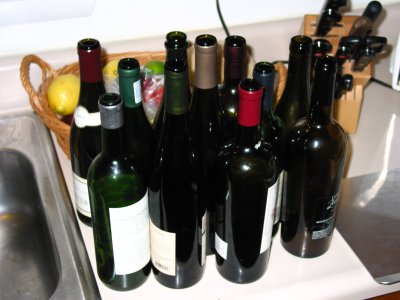The Future of Wine
There's a lot of talk these days about climate change, in particular global warming. Whatever the cause it's pretty well established that the world is getting warmer. Almost all of the current models show a mean temperature increase of about 1C by 2050 at the latest. I'm going to be a bit flippant and ignore the more severe implications of this and talk about what global warming means for the future of wine.
Changing temperatures will affect what areas are best for grape vines of all varieties. A single degree of change will mean hotter summer days and milder winters. Moderately high temperature concentrates sugars in grapes (if they're well-tended) but also results in smaller yields. The resulting wines can be incredible if the winemaker has a good deal of skill. If the temperature gets too high photosynthesis stops entirely and the grapes don't develop. The net result is that quantities will decrease, resulting in higher prices. Varities that do better in cold weather may suffer under these conditions, depending on whether the overnight temperatures are also high.
Changes in rainfall will have a much more severe impact on wine growing areas. If there's not enough rain irrigation will be required to allow the grapes to mature, increasing cost of both infrastructure and labor. Low rainfall also results in smaller yields; quantities go down, prices go up. More rain (up to a point) may be good for the overall health of grapes but may adversely affect their flavor. Rain at the wrong time of year can cause the grapes to swell and burst, making them unsuitable for wine making. Basically a "small" change in rainfall patterns such as an extra wet week every year can severely impact winemaking.
The amount of cloud cover over the year will affect the rate of photosynthesis and hence the production of sugars. Plants are amaazing engines able to turn solar energy into chemical energy. The more solar energy available, the better - except of course when the adverse effects of that energy outweigh the benefits. UV and other short-wavelength radiation damages DNA, harmful for basically everything grapes included. Since the ozone hole seems to be slowly repairing itself we're more likely to see a dearth of sunlight rather than an excess. This will lower sugar content (less energy!) and probably lower the overall quality of the grapes. Today the vines are carefully pruned to maximize the production of grapes and minimize the "vegetative" growth in other words leaves. Lastly some believe that grapes should be exposed to some sunlight every day, to enhance the production of monomeric anthocyanins and flavonols. Those are fancy words for "flavor". Changes in sunlight will require vintners to relearn how much pruning is required, when the optimal harvest time will be, etc. As in most things learning new things takes time, and that will cost money.
Last but certainly not least is humidity. Humidity is a major concern in grape-growing because of mildew (technically Uncinula necator conidia) and other fungus. The article I linked above shows that the higher the humidity, the greater the growth of conidia in roughly linear fashion. Some people have managed to make wines from infested grapes but it's not easy. In general crops that mildew are ruined. This is the greatest immediate threat to wine-growing regions along the west coast, especially Napa and Sonoma. A small change in wind-patterns could increase average humidity by a few percent. That's going to translate into a few percent higher growth of fungus, and a few percent smaller sized crop. The net effect is a few percent higher price for wine.
Overall these changes are going to result in higher prices for the same quality of wine, at least on the U.S. West Coast. I imagine that the story is similar for New York, Virginia, Australia, South Africa and parts of South America. In many ways this is the best time ever to purchase wine; the quality is outstanding and the prices are low. I don't think it's going to last that much longer (another 20 years, unless something changes). Stock up on the 2002-2004 Cabernet now.
There are winners as well as losers when the climate changes - some new regions are going to open up to high quality grapes. Eventually these may produce high quality wines which we can enjoy and chat about. It takes a while to get it right so I wouldn't expect to see "McKinley Vineyards Alaska Pinot" until 2050 or 2060.
Changing temperatures will affect what areas are best for grape vines of all varieties. A single degree of change will mean hotter summer days and milder winters. Moderately high temperature concentrates sugars in grapes (if they're well-tended) but also results in smaller yields. The resulting wines can be incredible if the winemaker has a good deal of skill. If the temperature gets too high photosynthesis stops entirely and the grapes don't develop. The net result is that quantities will decrease, resulting in higher prices. Varities that do better in cold weather may suffer under these conditions, depending on whether the overnight temperatures are also high.
Changes in rainfall will have a much more severe impact on wine growing areas. If there's not enough rain irrigation will be required to allow the grapes to mature, increasing cost of both infrastructure and labor. Low rainfall also results in smaller yields; quantities go down, prices go up. More rain (up to a point) may be good for the overall health of grapes but may adversely affect their flavor. Rain at the wrong time of year can cause the grapes to swell and burst, making them unsuitable for wine making. Basically a "small" change in rainfall patterns such as an extra wet week every year can severely impact winemaking.
The amount of cloud cover over the year will affect the rate of photosynthesis and hence the production of sugars. Plants are amaazing engines able to turn solar energy into chemical energy. The more solar energy available, the better - except of course when the adverse effects of that energy outweigh the benefits. UV and other short-wavelength radiation damages DNA, harmful for basically everything grapes included. Since the ozone hole seems to be slowly repairing itself we're more likely to see a dearth of sunlight rather than an excess. This will lower sugar content (less energy!) and probably lower the overall quality of the grapes. Today the vines are carefully pruned to maximize the production of grapes and minimize the "vegetative" growth in other words leaves. Lastly some believe that grapes should be exposed to some sunlight every day, to enhance the production of monomeric anthocyanins and flavonols. Those are fancy words for "flavor". Changes in sunlight will require vintners to relearn how much pruning is required, when the optimal harvest time will be, etc. As in most things learning new things takes time, and that will cost money.
Last but certainly not least is humidity. Humidity is a major concern in grape-growing because of mildew (technically Uncinula necator conidia) and other fungus. The article I linked above shows that the higher the humidity, the greater the growth of conidia in roughly linear fashion. Some people have managed to make wines from infested grapes but it's not easy. In general crops that mildew are ruined. This is the greatest immediate threat to wine-growing regions along the west coast, especially Napa and Sonoma. A small change in wind-patterns could increase average humidity by a few percent. That's going to translate into a few percent higher growth of fungus, and a few percent smaller sized crop. The net effect is a few percent higher price for wine.
Overall these changes are going to result in higher prices for the same quality of wine, at least on the U.S. West Coast. I imagine that the story is similar for New York, Virginia, Australia, South Africa and parts of South America. In many ways this is the best time ever to purchase wine; the quality is outstanding and the prices are low. I don't think it's going to last that much longer (another 20 years, unless something changes). Stock up on the 2002-2004 Cabernet now.
There are winners as well as losers when the climate changes - some new regions are going to open up to high quality grapes. Eventually these may produce high quality wines which we can enjoy and chat about. It takes a while to get it right so I wouldn't expect to see "McKinley Vineyards Alaska Pinot" until 2050 or 2060.

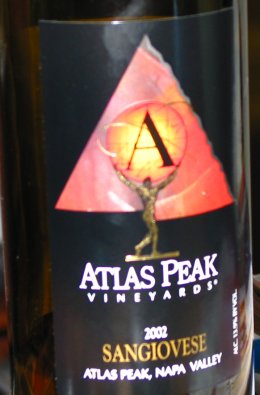 The Atlas Peak was an OK wine with moderate fruit and acidity typical of Sangiovese. It failed to add any unique character or to stand out from the crowd. If you find yourself in the unusual situation of picking a Sangiovese from a wine list, and you see the Atlas Peak, it's sure to be middle of the road. Perhaps in some odd way that advice may help you.
The Atlas Peak was an OK wine with moderate fruit and acidity typical of Sangiovese. It failed to add any unique character or to stand out from the crowd. If you find yourself in the unusual situation of picking a Sangiovese from a wine list, and you see the Atlas Peak, it's sure to be middle of the road. Perhaps in some odd way that advice may help you. 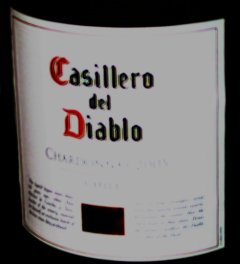 last week I bought it on the strength of their other wine. I found it to be a strong contender in the price range (<$15), easily beating well over half the field. In other words, it's well above the median and mean in terms of quality and flavor. I recommend it as an alternative to California Chardonnay in the same price range if you can find it.
last week I bought it on the strength of their other wine. I found it to be a strong contender in the price range (<$15), easily beating well over half the field. In other words, it's well above the median and mean in terms of quality and flavor. I recommend it as an alternative to California Chardonnay in the same price range if you can find it.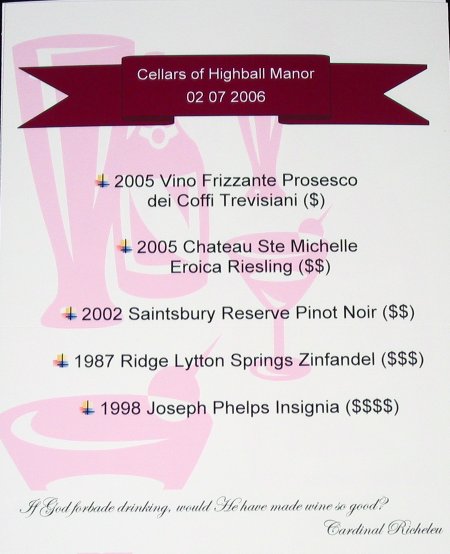 programs, which ended up just confusing folks since the new arrivals were interspersed with the originals. The actual tasting order went something like this:
programs, which ended up just confusing folks since the new arrivals were interspersed with the originals. The actual tasting order went something like this:
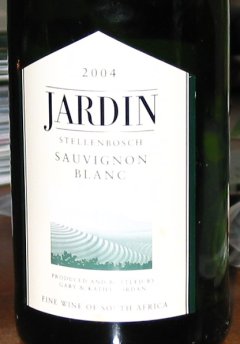
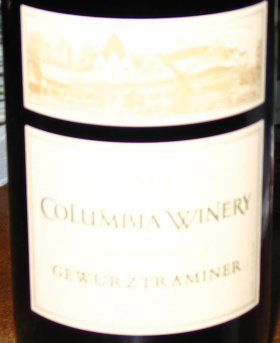
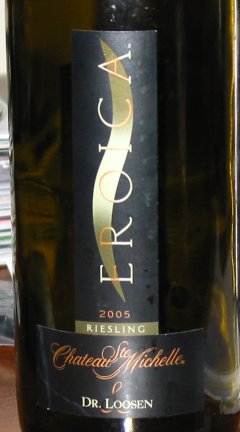
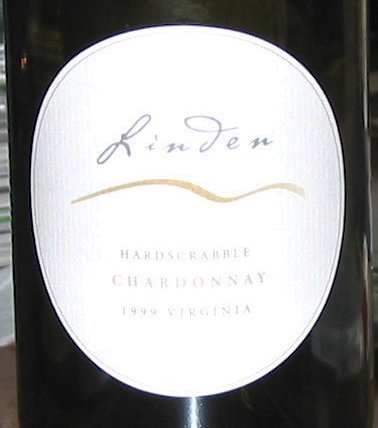
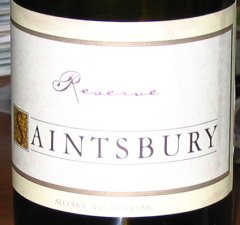
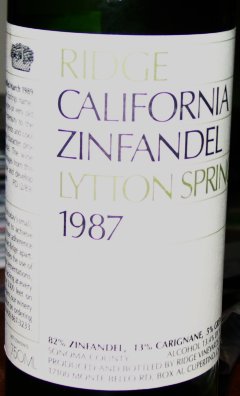
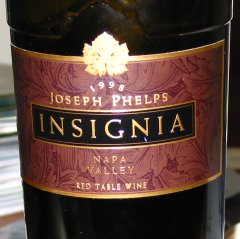
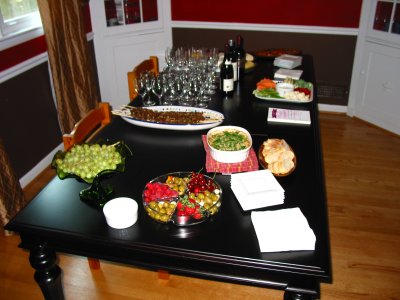
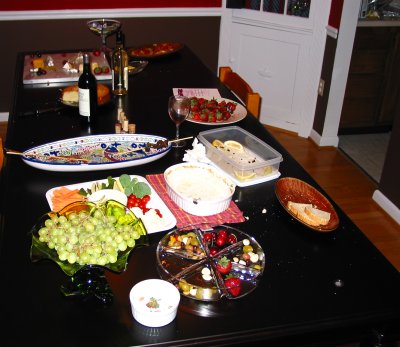 Gewurztraminer and South African Sauvignon Blanc were popular but opinion here was spread. Some enjoyed the Riesling more, and I was in the minority voting for the Chardonnay (gasp!) and the Prosesco. It was about this time the table started looking a little ragged.
Gewurztraminer and South African Sauvignon Blanc were popular but opinion here was spread. Some enjoyed the Riesling more, and I was in the minority voting for the Chardonnay (gasp!) and the Prosesco. It was about this time the table started looking a little ragged. 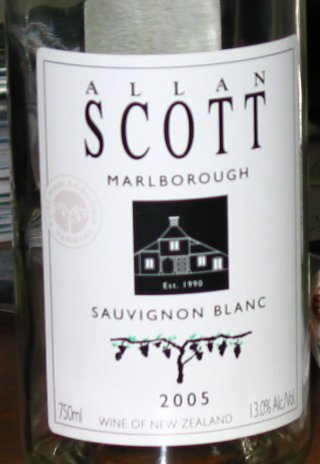 a glass of wine to chill out. That went on for some time - approximately 8 hours. I probably could mention every single wine that was tried during this period but I'll skip to the good stuff. The 2005 Allan Scott Sauvignon Blanc (New Zealand) was wonderful. Very highly recommended. The Dobra
a glass of wine to chill out. That went on for some time - approximately 8 hours. I probably could mention every single wine that was tried during this period but I'll skip to the good stuff. The 2005 Allan Scott Sauvignon Blanc (New Zealand) was wonderful. Very highly recommended. The Dobra 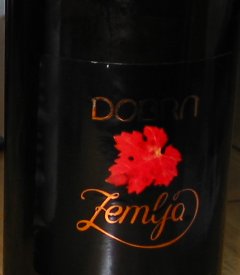 Zinfandel was a great contrast to the Ridge even though almost 20 years separated them. There was a distinctive difference in style that was fun to talk about and both wines were very good. A 2005 white Bordeaux, the Chateau Les Arromaus was also very good and stood out from the crowd.
Zinfandel was a great contrast to the Ridge even though almost 20 years separated them. There was a distinctive difference in style that was fun to talk about and both wines were very good. A 2005 white Bordeaux, the Chateau Les Arromaus was also very good and stood out from the crowd. 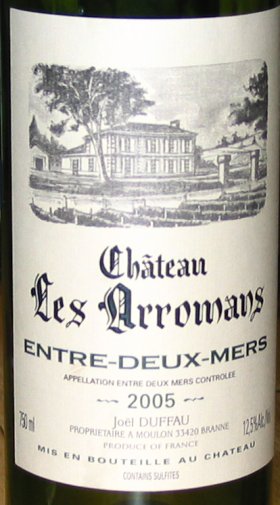 The total damage was quite extensive.
The total damage was quite extensive. 